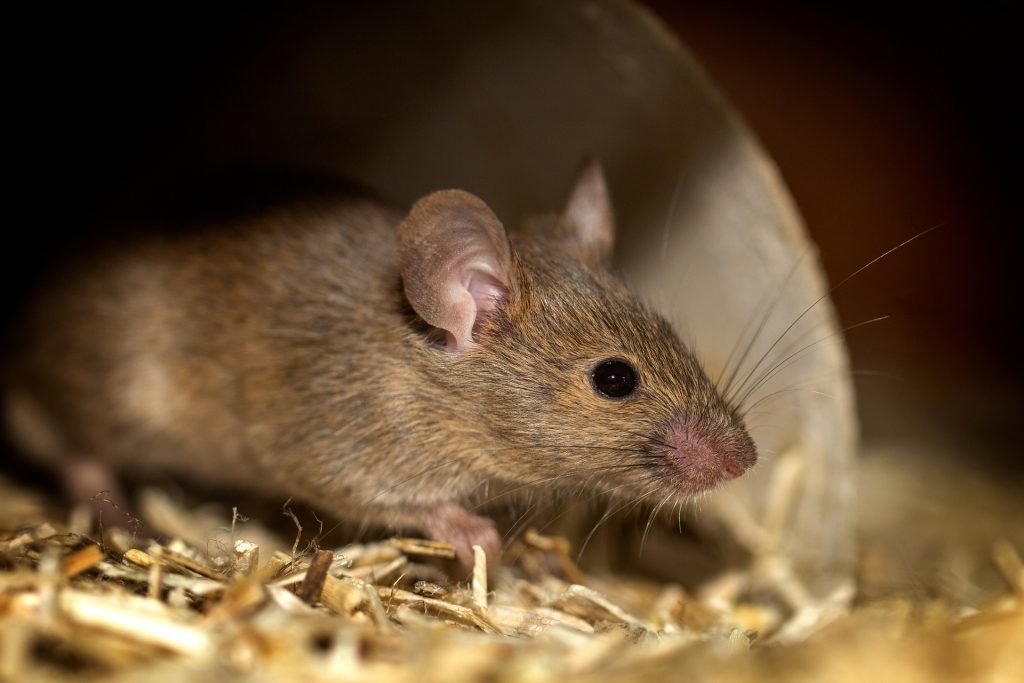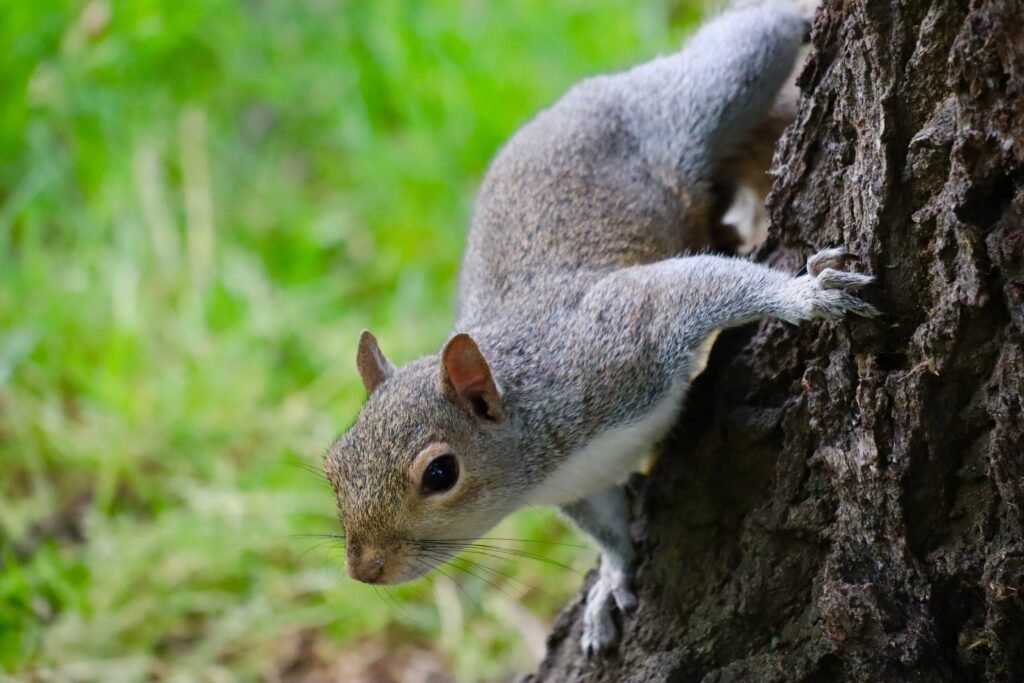Rodent Removal Services

Whether it’s mice or rats, rodent removal must be performed before the critters can reproduce because a few rodents will quickly turn into hundreds. Rodents’ waste, fur, and saliva, which all carry diseases like hantavirus, can contaminate up to ten times the food they consume. This can weaken immune systems, headaches, fever, meningitis, and even rabies in rare cases.
Rodent infestations can wreak havoc on your home, leaving a trail of frayed wires, boxes, and clothing in their wake. Rodents can squeeze through gaps that appear to be too small for them, and they will enter your home at any time. To remove rodents from your home or to prevent a rodent infestation in the first place, contact Animals Happen at 833-633-1120 to connect with a local rodent control expert.
Nuisance Rodent Species
Diet Of Rodents
Many species of rodents eat different foods, and they are found all over the world. Squirrels, mice, rats, and beavers are just a few examples of common rodents. Many rodents, such as mice and rats, have a diverse diet and can adapt to various environments. Others, such as the squirrel and beaver, have more specialized food and habitat needs.
Meat-eating rodents do exist. Rats are particularly fond of meat and fish. Rats can digest rotten meat and will eat scraps from human garbage. They will also eat roadkill and carcasses left by other animals. Rats are opportunistic feeders who will eat any flesh that comes their way.
A large number of rodents will consume people’s human food. Rodents are fond of domestic dog, cat, and livestock feed. They eat dairy, bread, leather, and bird food as well. Rodents are attracted to salt, and they will seek it out in worn clothing and shoes.
The majority of rodents are nut eaters. Squirrels are the main nut eaters, and many of them rely on nuts all year. Nut eaters include rats, mice, and porcupines. They don’t go out of their way to eat nuts, but they do eat them when the opportunity arises.
How Can Rodents Enter Homes?
 Rodents gain access to homes via cracks and holes in walls, floors, and foundations. Homeowners frequently overlook mouse or rat holes until other signs of infestation appear. Due to their body shape, rodents can fit through much smaller holes than they appear to be capable of.
Rodents gain access to homes via cracks and holes in walls, floors, and foundations. Homeowners frequently overlook mouse or rat holes until other signs of infestation appear. Due to their body shape, rodents can fit through much smaller holes than they appear to be capable of.
Rodents can also get into the house through cracks in the walls or ceilings and sewer lines. Mice or rats can enter homes through sink or bathtub drains if drainage pipes are not adequately sealed. They’ve also been known to enter through entry holes near plumbing and oven gas lines.
Infestations tend to start in the fall as a result of the cooler temperatures. When a colony enters a structure and discovers that it is safe and warm, they rarely leave it. Rodents reproduce quickly, and populations can reach 200 individuals in a matter of months.
Dangers Of Rodents In And Around The Home
Whether it’s squirrels in the attic or rats running through the kitchen, all nuisance rodents create damage and spread diseases. On the exterior of a home, rodents will tear through siding or vents to gain access to the inside of the property. Once inside, they will chew on everything from electrical wiring to clothing. Rodent droppings will accumulate as the infestation grows, and in turn, food sources will become contaminated with harmful bacteria. 1Go To Source epa.gov -“about rats and mice”
Property Damage Caused By Rodents
The many insulation layers in attics and crawlspaces immensely appeal to mice and rats looking for a place to nest. Their activity and movement frequently compress, shreds, and dislodges the insulation, reducing the insulation’s active effect. Heat loss or escape also means you’ll have to pay more for your monthly heating or cooling bill. Furthermore, contaminated insulation poses a health risk, heightening the urgency of replacing or repairing damaged insulation.
This is also true of chewed-through roofing and siding materials, which rats and squirrels are known to eat. This process can also damage electrical wiring, resulting in dead circuits or house fires in the worst-case scenario. To cut a long story short, you don’t want these critters to have access to your home’s interior or exterior because of the costly and extensive rodent damage they can cause.
If you’re trying to sell your house, contaminated insulation is even more of a problem. Whether dislodged or soiled with rodent debris, these issues will be discovered during the home inspection and may cause the sale to fall through.
Diseases Spread By Rodents
 Rodents such as mice and rats seek food, warmth, and shelter indoors during the colder months, often entering homes through small cracks and crevices. The real concern is that once inside, these pests can spread diseases and cause severe property damage.
Rodents such as mice and rats seek food, warmth, and shelter indoors during the colder months, often entering homes through small cracks and crevices. The real concern is that once inside, these pests can spread diseases and cause severe property damage.
The accumulation of mouse and rat feces has the potential to spread bacteria, contaminate food sources, and cause allergic reactions in humans. When feces becomes dry, it becomes dangerous to those who breathe it in. Furthermore, diseases and viruses spreadable by rodents include:
- South American Arenaviruses
- Lassa Fever
- Tularemia
- Hantavirus Pulmonary Syndrome
- Plague
- Lymphocytic Chorio-meningitis (LCM)
- Hemorrhagic Fever with Renal Syndrome
- Rat-Bite Fever
- Leptospirosis
- Omsk Hemorrhagic Fever
- Salmonellosis 2Go To Source kingcounty.gov -“Diseases from rodents, pocket pets, and rabbits”
Rodent Trapping & Prevention
A multi-step pest approach is required for successful rodent control. There are also a variety of traps and baits available. These procedures, however, can be harmful and must be utilized appropriately in order to be effective. As a result, they should not be used without the assistance of a rodent management expert.
Rodent removal experts begin by inspecting the entire property for all infested areas. Using information gathered during the inspection, the wildlife technician will form a rodent control plan built specifically for your property. The plan is then put into place through traps and rodent exclusion practices. Once the home is rodent-free, all entry points are sealed, and the property will be examined for damage and leftover rodent feces.
Rodent Exclusion
Rodent exclusion is the most effective way to eliminate a pest infestation in your home or business. Rodent exclusion is a technique for reducing the conditions that may attract rodents to your property and thus preventing future rodent infestations.
The first step in rodent exclusion is to seal off any potential entry points. Rats can enter your home through a hole the size of a quarter, while mice can squeeze through a hole the size of a dime. To eliminate possible entry points, rodent control experts inspect the entire property for rodent-sized gaps. They will then seal off all entry points with weatherproof materials.
After that, any food or water sources that could be feeding a rodent infestation are removed. Human food should be stored in sealed containers to exclude rodents from an easy meal.
Finally, all potential rodent nesting areas are eliminated. This becomes more difficult when rodents are nesting inside walls. These nests will be identified during the inspection and may require a wall to be cut out to reach the nest.
Need Help Removing Rodents From Your Property?
Animals Happen’s pre-qualified wildlife control technicians have skilled rodent control services to help you eliminate your rodent problems, whether it’s a single troublesome mouse or a large squirrel infestation. Wildlife Management Services can set up mouse traps and repair any points of entry to ensure that your rodent control issues at home or the office don’t recur. Give us a call today at 833-633-1120 to begin the rodent control process.
Sources:
- “About Rats and Mice.” US EPA, Environmental Protection Agency, 7 Oct. 2020, www.epa.gov/rodenticides/about-rats-and-mice.
- “Diseases from Rodents, Pocket Pets and Rabbits – King County.” Kingcounty.Gov, King County, WA, 16 June 2020, kingcounty.gov/depts/health/communicable-diseases/zoonotic/facts-resources/diseases-by-animal/pocket-pets.aspx.
- “ContraPest Rodent Control Product Wins EPA Approval”. Pest Control Technology, GIA Media. 12 August 2016. Retrieved 11 November 2016.
- “Finding Money in the Attic”. Pest Control Technology, GIA Media. 25 May 2017. Retrieved 7 June 2017.
- “Help WildCare Pursue Stricter Rodenticide Controls in California”. wildcarebayarea.org/. Wild Care. Archived from the original on 5 March 2014. Retrieved 28 February 2014.
- “Safer Rodenticide Products”. epa.gov. USA Environment Protection Agency. March 2013. Retrieved 23 February 2014.
- Meerburg BG, Brom FW, Kijlstra A (2008). “The ethics of rodent control”. Pest Manag Sci. 64 (12): 1205–11. doi:10.1002/ps.1623. PMID 18642329.
- “Rodenticide manufacturer defies EPA, requests hearing on anticoagulant use”. Retrieved 4 April 2015.
- “Poisons used to kill rodents have safer alternatives”. Retrieved 4 April 2015.
